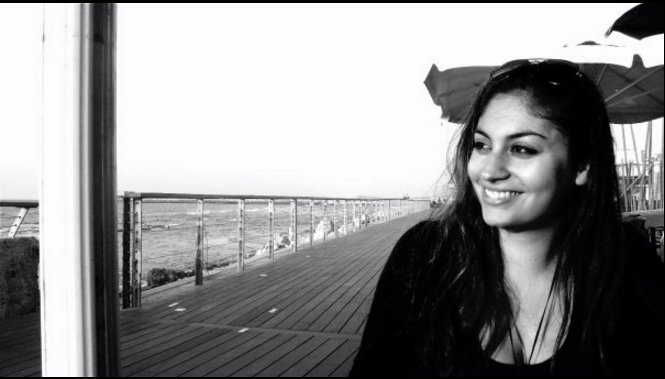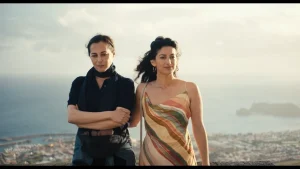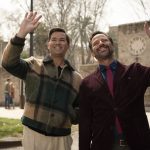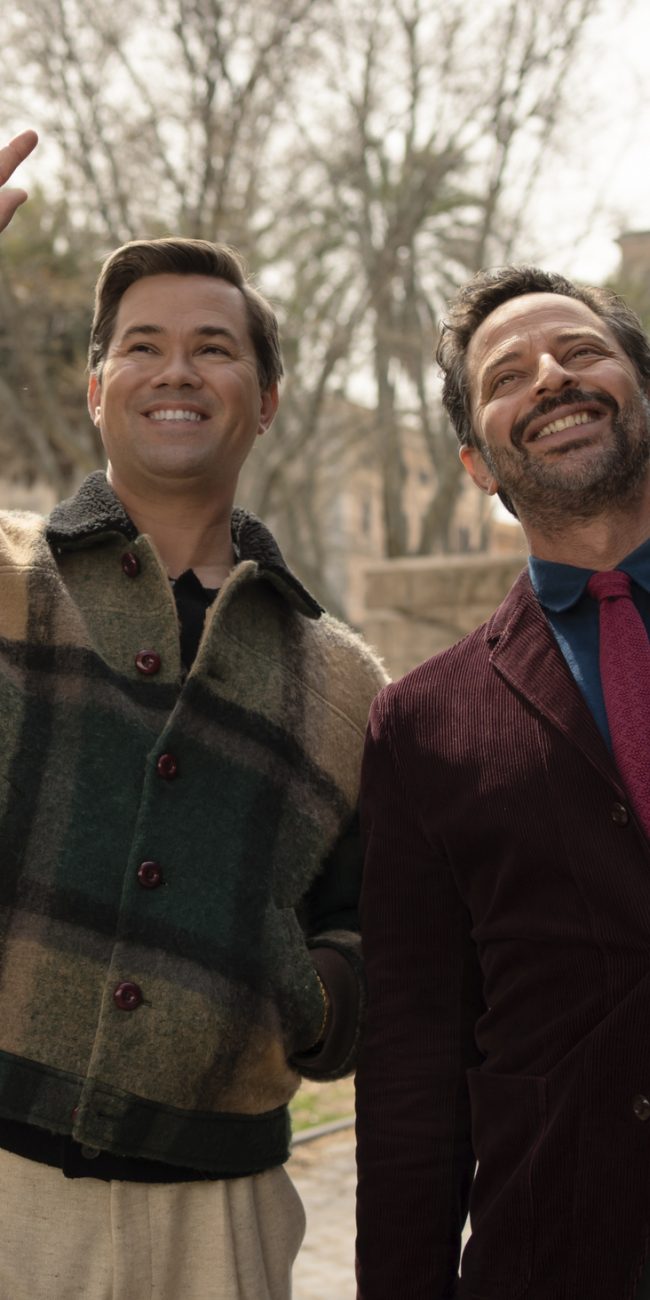A Conversation with Lilian T. Mehrel (HONEYJOON)

In Honeyjoon, find ourselves in the paradise that is San Miguel island, the Azores, Portugal. Stark blue waters mirror the cloudless sky above as honeymooners bask in the sun, hand in hand, enveloped by the romantic allure of the island. It’s a scene taken from a Renoir painting. For Honeyjoon’s main characters, though, it’s more like Dante’s Inferno.
In her debut feature film, director Lilian T. Mehrel paints a landscape that traverses the human experiences of tragedy, comedy, and joy. Mother and daughter, Lela (Amira Casar) and June (Ayden Mayeri) embark on a trip to San Miguel on the one year anniversary of their husband/father’s death. Although a veil of grief is cast upon their trip, they find themselves surrounded by happy couples, trapped in saccharine claustrophobia. Mehrel captures the waves of loss, joy, and relief June and Lela feel by having them, and the viewer, bend to the will of San Miguel’s mercurial nature.
In 2024, the film won the AT&T Tribeca Untold Stories grant, an award of $1 million that brought Mehrel’s vision to life. Honeyjoon premieres at the Tribeca Film Festival on June 7.
Hammer to Nail: First off, congrats on receiving the AT&T Tribeca Untold Stories grant! What opportunities did this award open for this film and what did Honeyjoon look like before and after this support?
Lilian T. Mehrel: It was just life changing. Before I won the award, I was alone with my script. It was just me, my script in my hands, and my wonderful producer, Andrea Nunez, in Portugal. That was it. And when you think about it, the only thing that was standing between me making this film and the film itself was the million dollars. As soon as that resource was an option, as soon as we won the award, we made the film. The Tribeca AT&T untold stories award is the largest production prize in the world; it’s a million dollars to make your film. The fact that that even exists is incredible. So as soon as soon as we won, we went into pre-production and we had our whole cast, crew, everybody on the island of San Miguel, Azores, Portugal.
HtN: Wow, so the whole film was shot on location? Even from the movie screen, the island looked stunning. Though, one of the driving factors of the plot is San Miguel’s weather and how unpredictable it can be. Much of the film is shot outside, so how did this impact or inform filming?
LTM: I’ve been trained in indie filmmaking to be very present, to roll with the punches, and to think on my feet, so shooting this feature on the island, mostly outside, with weather that changes, it was the ultimate test. Do I know the core of my story? Do I know what I need to capture if I only have one hour before it starts raining? It really sharpened the story and it also created this sense of presence and freedom. What if something even better than we thought happens and we can capture it if we’re open to it? And that did happen, actually.
When we were location scouting once, we got to this viewpoint and it had been foggy, and you couldn’t see anything and I was like, “Oh, that would be amazing if that happened in the film. It would be really funny and cinematic.” But you can’t count on it, so I didn’t write it into the script. And then at one point we got to a location that was intended to be sunny and I saw as we were going up into the mountain, it was getting foggier and foggier, so I rewrote the script and we got the moment that I initially was inspired to get. The island gave that to us.
HtN: To go back to the beginning, what was the genesis of this film?
LTM: The kind of stories that I love to tell capture both the light and dark of life; the humor and the poetry of it all; the heartbreak and the joy. As a writer, director, my tonal blend is humor, heart and art. I was waiting to tell a story about when bad things happen, when hard things happen, when you live with loss, how do you enjoy life again, with two characters who have totally different approaches to grief. The mom wants to connect over the pain, while the daughter wants to run towards the light and feel pleasure and flirt and feel alive again. Ultimately these two halves are like the Yin and Yang and they find that feeling alive means feeling all of those things.

A still from HONEYJOON
When I went to this real island in the Azores, I suddenly realized it was a very darkly funny premise to have a mother and a daughter grieving in this beautiful, romantic island, surrounded by honeymooners, because comedy lives in contrast. I was really inspired by real things I experienced on the island. And then fiction takes on a life of its own.
HtN: The question that you say shaped Honeyjoon, “How do we enjoy life in the midst of heartbreak and sadness and chaos?” is quite a difficult question to answer. Throughout making the film, were there any moments that suggested what that answer might be?
LTM: We shot some of the film on real film, on Super Eight. There’s like a almost universal nostalgia and connection to those visuals because it feels like a memory. And I just remember when we would shoot those moments on Super Eight, there was this, like, quiet and this sort of stillness. And there was this sense of understanding what it feels like and means to capture a memory that’s already passing. Like right now, this moment is passing. And we were on the film set all very aware of this special moment in time. We all came to this island to shoot this, and then we’re all going to leave. Everybody has their own experience of knowing that the moment is what we have and the moment passes. That’s our own eternal experience of, you know, living life. So yeah, I think shooting on Super Eight film connected us all in that awareness.
HtN: So the key is to be aware of each fleeting moment. This film, though, is not just about the elusiveness of memory and the attempt to preserve it, but specifically the preservation of memory through heritage? How is this present in your own life?
LTM: Being a daughter of immigrants and being mixed, I have this experience of living in a multicultural world. And here are these three characters who all have different cultures, but at the end of the day, all these specifics and details and differences are sort of on the surface, and underneath it all, they all share the same humanness: the same pains and pleasures and embarrassments. So it really mattered a lot to me that we understand that they have the culture clashes and the generational differences and all of that, but that underneath, they’re all the same, they’re all human. I think we all speak our own languages anyway, as humans, and it’s just like a miracle that we can ever understand each other. And that’s kind of why I make films, because, I can’t say it in words, I have to put it into a story.
HtN: It’s clear that you brought so much of your own life, passions, curiosity into this film. How did your cast and crew build upon this as well?
LTM: The beginning, like I said, I was alone, just me and my script. But then I was very lucky to develop the film in the Torino film lab. And at their comedy lab, they brought comedians to improvise scenes with us. So very early on in my script development, I saw the scene come to life with actors who were, because it’s improv, embodying the spirit of it. You get really deep into your character work. I had this amazing tutor at the film lab, Laura Piana, she played a therapist who was having a session with one of my characters. And so they sat on a therapy couch, and talked about their childhood and their parents.
And then then, of course, my cast. It stars Ayden Mayeri, Amira Casar, and Jose Condessa and they are gems. They embodied their characters very fully. We would go out for coffee and have conversations about, like, the characters love life, the stuff that you like you don’t see on screen that makes it really rich.
At every phase, the different creative collaborators brought their own life to it. Even though it was all within my vision of the Honeyjoon world, it just became richer and more complex the more the more team members brought their love to it.
– Kaitlyn Hardy











